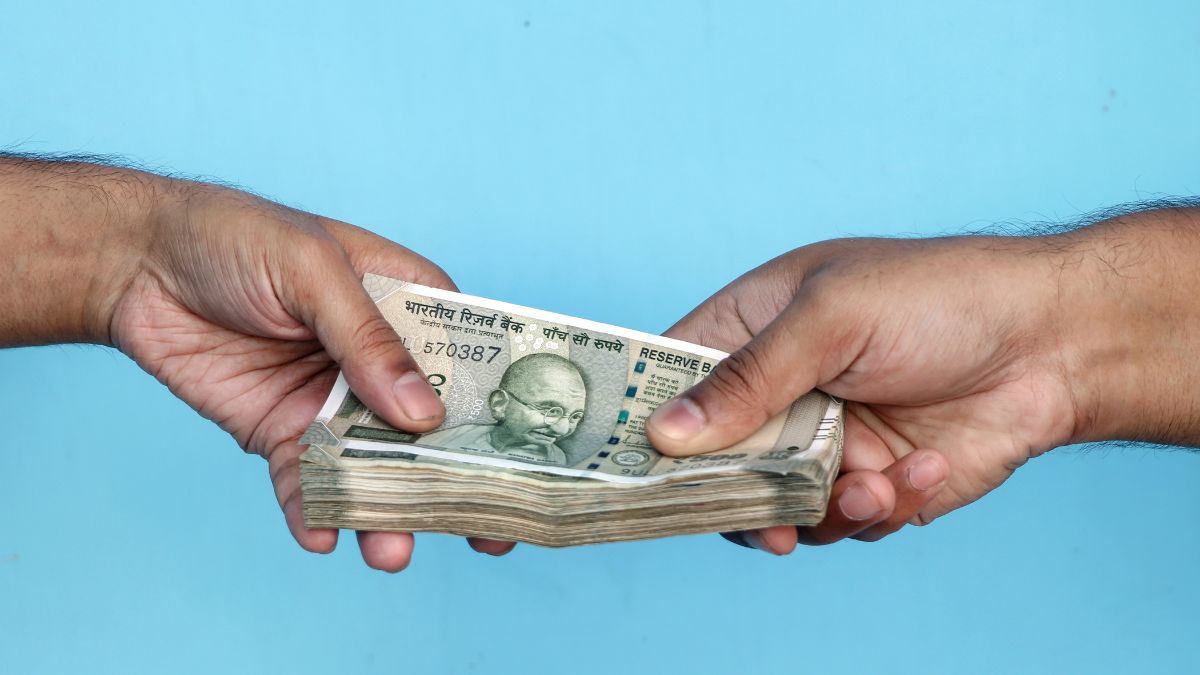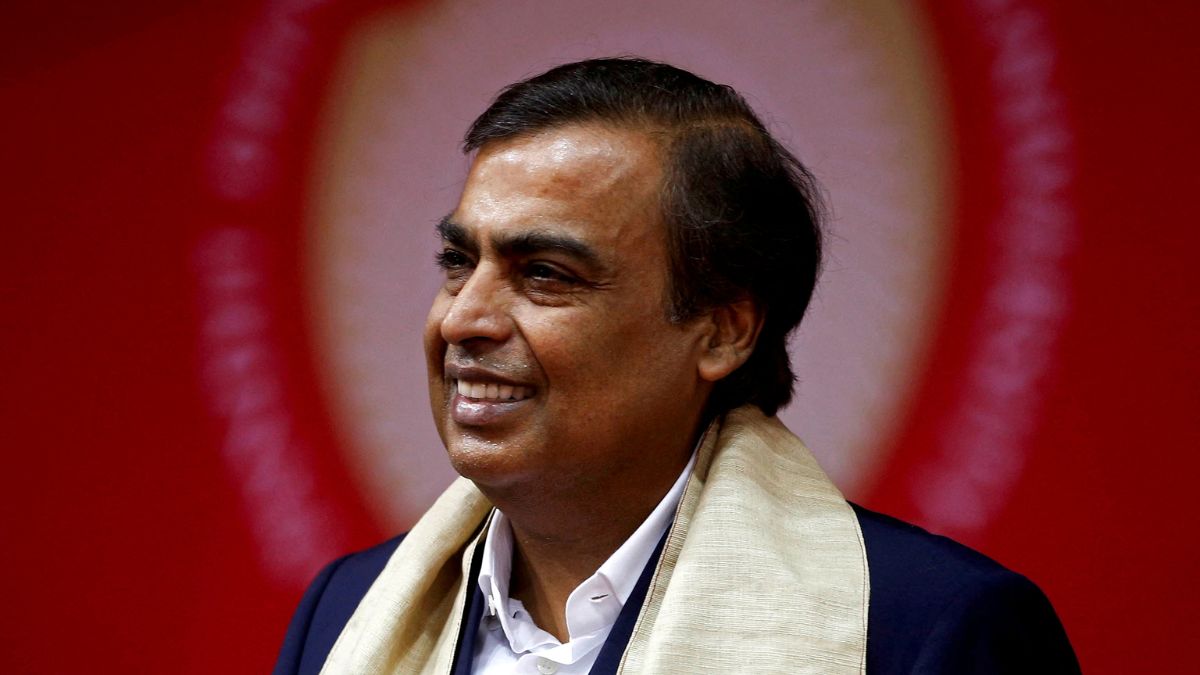It has been a tough couple of days for the rupee. The Indian currency hit an all-time closing low of 83.57 against the greenback on Tuesday. We take a quick look at why the Indian rupee was hovering around its all-time low on 11 June and whether it might fall to yet another lifetime low on Wednesday read more
)
The Indian rupee is hovering around an all-time low against the US dollar. Reuters
It has been a tough couple of days for the rupee. Bogged down by political uncertainties and a swiftly strengthening dollar, the Indian currency hit an all-time closing low of 83.57 against the greenback on Tuesday.
On Wednesday, the Indian rupee narrowly missed hitting an all-time low, opening at 83.54. Still, the currency isn’t out of the woods just yet. The threat of an all-time low, one that would hit India’s forex reserves and inflation hard, is looming large ahead of the US Federal Reserve’s rate cut decision and key inflation data expected tonight.
#RupeeCheck | Rupee Opens At 83.54/$ Vs Tuesday’s Close Of 83.57/$ pic.twitter.com/hHdkmYHKyv
— CNBC-TV18 (@CNBCTV18Live) June 12, 2024We take a quick look at why the Indian rupee was hovering around its all-time low on Tuesday, and why it might fall to yet another lifetime low on Wednesday.
Behind Indian rupee’s fall to a record closing low
Multiple factors, including the US dollar climbing to a one-month peak and domestic political uncertainties, contributed to the Indian rupee hitting an all-time closing low of 83.57 on Tuesday.
Anticipation around the Fed’s interest rate decision: Anand James, the Chief Market Strategist at Geojit Financial Services explained this. He said, “The US dollar hit a four-week high on Tuesday, with the dollar index rising 0.1 per cent to 105.24, peaking at 105.46- its highest since May 14- ahead of a key inflation report. Strong May jobs data raised concerns about persistent inflation, making a rate cut less likely soon.”
Note that the US Federal Reserve’s Federal Open Market Committee (FOMC) is expected to announce its decision on whether or not it will cut the interest rates in the US. These rates have been stuck at a 23-year high since July last year. It means that the interest rate paid on borrowed money is high, while the interest earned on money deposited in banks is also high.
What does a high interest rate have to do with the US dollar’s strength, though? The answer is dollar-denominated assets. With interest rates high, dollar-denominated assets become much more attractive. For example, if you put money in bank deposits in the US, it would earn you an interest rate that is probably the highest in the past 23 years. That makes US dollar-denominated assets attractive, prompting investors to buy the greenback and invest it in these assets.
The connection between “dot plot” and US dollar: The FOMC is not only going to reveal its decision on interest rates, but is also set to unveil its “dot plot”. The dot plot is a visual representation of where top Fed policymakers think the interest rate is headed. Bloomberg quoted Patrick Locke, an FX strategist at JPMorgan Securities LLC in New York, as saying that the dollar tends to outperform around meetings with dot-plot releases relative to those without.
Volatility in Europe: Another reason the US dollar has climbed is the announcement of elections in Europe, especially snap elections being called in the UK and France. Investors speculate this to be a time of uncertainty and would want to avoid investing in European assets. The US dollar, traditionally considered a safe haven, attracts investments from such entities, too.
Rise in crude oil prices: Aamir Makda, Commodity & Currency Analyst at Choice Broking, told Firstpost that “the Indian rupee has dropped due to weakness in Asian currencies and a hike in crude oil prices.” Note that crude accounts for a significant portion of India’s overall imports. Thus, a rise in prices affects the stability of the Indian rupee.
Political uncertainty in India: Domestically, there was a streak of political uncertainty in India following the 2024 Lok Sabha election results. That contributed to the weakening of investor confidence, and thus, the weakening of the Indian rupee.
Can the Indian rupee fall to a new record low?
Depending on what the consumer price inflation (CPI) data says, and on the decision taken by the Fed on interest rates, the demand for the US dollar may rise further. Further volatility in Europe and in the Middle East may also lead to investors rushing to pump their money into safe haven assets.
In such a scenario, the greenback will strengthen. Consequently, the Indian rupee could clock in a new record low.
Makda pointed out that if the Indian rupee continues to trade above the 83.48 level, “we can expect further weakness in the Indian rupee.” Around 12:30 pm, the Indian rupee was trading at 83.535, well above the level suggested by Makda.
However, the Reserve Bank of India (RBI) has been active in intervening into the foreign exchange trade. In fact, the reason the Indian rupee did not hit an all-time low on Wednesday morning when the forex trade opened, is likely because of the central bank’s involvement, according to a report by Reuters.
Pranav Mer, Vice President, EBG - Commodity & Currency Research, JM Financial Services, told Firstpost that the downside for the Indian rupee looks limited, with foreign flows expected to rise in the domestic bond market, as well as in equities. He also pointed to possible central bank intervention around 83.6-83.7 level. “Overall, sentiments remain upbeat due to better growth prospects of the domestic economy, continued governmental policies, crude oil prices hovering below $80 per barrel - likely to keep the rupee supported,” Mer said.
Clearly, possibility of RBI intervening in case the Indian currency comes close to falling to a record low cannot be brushed aside.
To add on, the political uncertainty seems to have gone down and restricted the decline of the Indian rupee.
With inputs from agencies

 3 months ago
44
3 months ago
44
)
)
)
)
)
)
)
)
)
)
)
)
)
)
)
)
)
)
)
)
)
)
)
 English (US) ·
English (US) ·